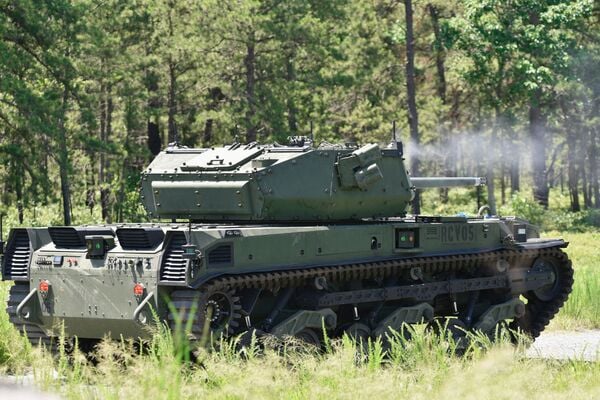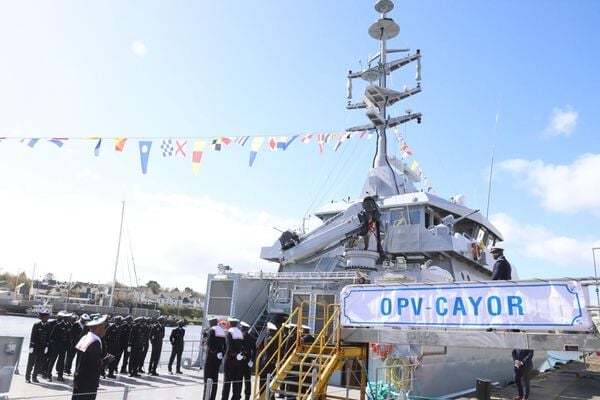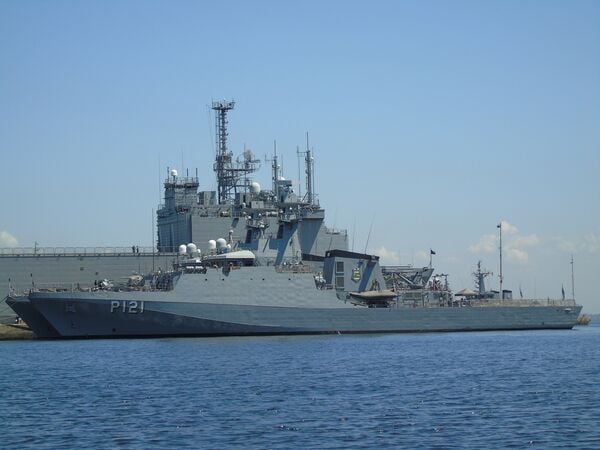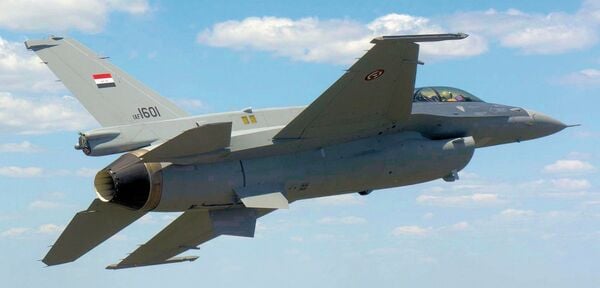- About
- Intara
- Capabilities
- Advisory
- Resources
- News
- Store
US Army conducts first RCV-M live-fire testing
06 August 2021
by Ashley Roque
The US Army is conducting shakedown testing with four Robotic Combat Vehicle – Medium (RCV-M) prototypes, and as part of this phase, has begun live-fire tests with the platforms' XM813 main gun and M240 machine gun.
Earlier this year, the Textron Systems, Howe & Howe Technologies, and FLIR Systems team delivered its fourth and final RCV-M prototype to the army that is based off the Ripsaw M5 and is outfitted with Kongsberg Defence & Aerospace's PROTECTOR Medium Caliber Remote Weapon Station (MCT-30).
These vehicles then received government-developed autonomy software and can be paired up with modified Bradleys that are called Mission Enabler Technologies – Demonstrators (MET-Ds) for manned-unmanned teaming work, Major General Ross Coffman, the director of the Next-Generation Combat Vehicle Cross-Functional Team, told Janes in June prior to the test series beginning.

Update: Piriou completes OPV 58 S programme for Senegal
23 April 2024
by Kate Tringham


Cayor , the third and final OPV 58S, was formally handed over to Senegal during a ceremony in Concarneau on 16 April. (Senegalese Navy)
French shipbuilder Piriou has delivered the final missile-armed Walo (OPV 58 S)-class offshore patrol ship to Senegal, completing the three-ship programme.
The last vessel in the class, named Cayor, was formally handed over during a ceremony held in Concarneau, France, on 16 April, the shipbuilder confirmed the same day.
According to Piriou, the shipbuilding programme was completed on time and “mobilised hundreds of employees for four years and represented more than 600,000 hours of work”.
Piriou built and delivered the three OPV 58 S ships under a contract signed with the Ministry of the Armed Forces of Senegal in November 2019. The construction programme was carried out with the support of Kership, the joint venture founded by Piriou and Naval Group in 2013.
Brazil to update OPV radar systems
23 April 2024
by Victor Barreira


The Brazilian Navy wants to improve the radar capabilities of its OPVs. (Victor Barreira)
As part of an effort to update its Amazonas-class offshore patrol vessels (OPVs), the Brazilian Navy is acquiring a new air and surface search radar with identification friend-or-foe capability (IFF), according to the Navy Weapon Systems Directorate (Diretoria de Sistemas de Armas da Marinha: DSAM).
The Brazilian Naval Commission in Washington, DC, (Comissão Naval Brasileira em Washington: CNBW) on behalf of the DSAM has requested a request for information (RFI) and the price availability for up to three radars on 25 March.
The navy seeks to recover the combat capability of the OPVs by updating several of the ship's systems, the Navy Directorate-General for Material (Diretoria-Geral do Material da Marinha: DGMM) recently told Janes .
The modernisation of the OPVs will be carried out by the DSAM, the DGMM added, without detailing a schedule and the scale of the effort.
The DSAM is subordinated to the DGMM.
Iraq to equip F-16s with AIDEWS EW suite
23 April 2024
by Gareth Jennings


The IqAF is to equip all 34 of its F-16 combat aircraft with the AIDEWS electronic warfare suite. (Lockheed Martin)
Iraq is to equip its Lockheed Martin F-16 Fighting Falcon combat aircraft with the L3Harris AN/ALQ-211 Advanced Integrated Defensive Electronic Warfare Suite (AIDEWS) electronic warfare (EW) system, the US Department of Defense (DoD) disclosed on 22 April.
The DoD requires the retrofit of the AIDEWS system into 34 Iraqi Air Force (IqAF) F-16C/D Block 52M aircraft located at Martyr Brigadier General Ali Flaih Air Base (Ali Flaih AB [AFAB], previously known as Balad Air Base), a solicitation posted on the SAM.gov US government procurement website said.
The DoD solicitation provided no contract value or timeline details.
The AIDEWS comes in both an AN/ALQ-211(V)4 integrated and an AN/ALQ-211(V)9 podded configuration, with the newer Block 52 and above aircraft of operators such as the IqAF having the internal space needed for integration, while older block aircraft do not and therefore, require the podded system.
The IqAF fields 24 single-seat F-16C and 10 twin-seat F-16D aircraft, deliveries of which commenced in 2014.
For more information on the IqAF, please seeIraq – Air Force .
The US Army is conducting shakedown testing with four Robotic Combat Vehicle – Medium (RCV-M) protot...
Latest Podcasts
Iran Israel analysis
In this podcast Janes analysts discuss the Iranian attacks on Israel on the 14 April. They highlight the military systems used by Iran and the performance and impact of these on Israel. They also discuss the implications of this attack goi...
Listen nowJanes Case Studies
Using Janes Intara to build a common intelligence picture: Russian build up on the Ukrainian border
View Case StudyNews Categories
 Weapons Details
Weapons Details